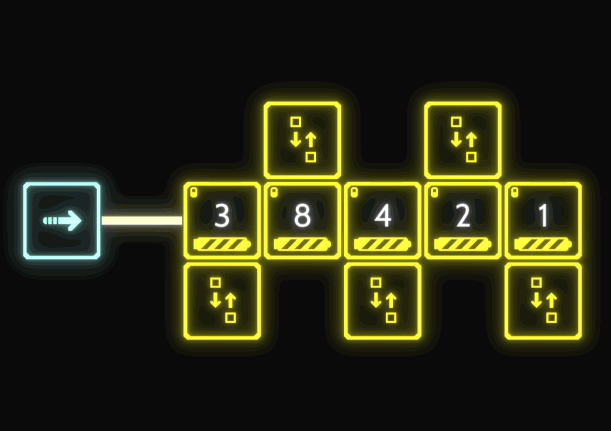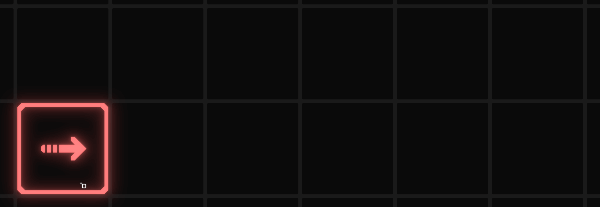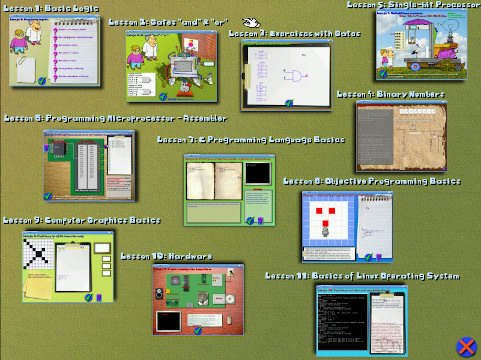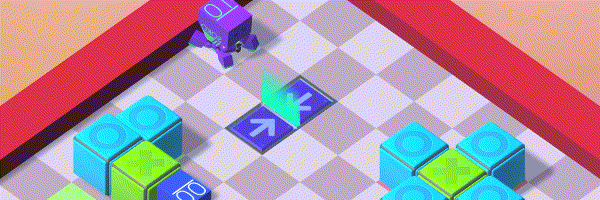
SOLAS 128
This is a contender for my favourite puzzle game of all time.
I have played literally hundreds of puzzle games, to the point where I am basically burned out on puzzles… so when I saw Solas 128 I thought “uh-huh… lasers, mirrors, yada yada” but boy oh boy was that initial assessment wrong!
This game takes what seem like familiar puzzle elements, adds some brilliant twists and builds a huge sequence of constantly surprising puzzles from them. Time and again it hits you with those “wait but that’s impossible” problems, before delighting you with your own genius a few minutes later. On top of that, the puzzles are all integrated into a single overworld, so that they connect and interact with each other, adding another mind-blowing layer to the experience. It’s a vast intricate clockwork construction of utter perfection.
– Real player with 251.7 hrs in game
Read More: Best Programming Soundtrack Games.
This is an absolute belter of a game. If you’re into puzzle games, you should definitely pick this up.
The “bounce lasers off mirrors” idea may sound derivative, but Solas manages to make it interesting again. The light beams have symbols travelling along them to the beat, and these can interact - if they collide the colours combine and the combined beam changes direction. So sometimes you need to get the symbols to line up, sometimes they need to be out of step so the beams can pass through each other. Combined beams can be separated with splitters - there’s lots going on here, and the game introduces them at just the right rate to keep things interesting.
– Real player with 32.1 hrs in game

Block Machine
Block Machine is a difficult yet poorly explained programming puzzle that combines the joy of doing homework for computer science class with the eerie satisfaction of toying around with Redstone in Minecraft.
In Block Machine, you build machines from blocks (who would have guessed!) to solve a variety of programming tasks. Block Machine’s programming model is unique: Blocks are both code and data, and all computation happens in parallel. Von Neumann would have loved this.
15+ Different Block Types to Explore

How many different ways can you find to use the basic arrow blocks? Or maybe you fancy the charged battery blocks? Wrap your head around the different capabilities and use them to build the smallest and fastest Block Machine.
25+ Challenging levels, ranging from HARD to REALLY HARD

Solve difficult programming puzzles in this Turing tarpit. Can you beat the global highscore in any of the three categories?
A Sandbox mode to mess around to your heart’s content

Build that 1000 block machine your dreamt about last night. Or don’t. It’s a sandbox!
Read More: Best Programming Sandbox Games.

Drag Engineer
In this game, you will play an engineer and write programs for different machines in different places.
You will learn how to write judgments, loop structures, and use them in the right place.
There are 18 levels in the game. Each level will assign you a programming task. Your job is to complete the task.
Read More: Best Programming 2D Games.

GLADIABOTS - AI Combat Arena
This is a superb, unique game that deserves to be even more popular than it already is.
The concept of the game is that the player designs their own AI via customizable ‘nodes’ (colour-coded tiles that the player can arrange into a logic tree to determine their robots' behaviour) which then dictate how their team of 4-8 robots (from four different classes) perform in battle against ‘enemy’ AIs.
The logical array which the player creates (featured in several of the screenshots in the store page) can be anywhere from just a handful of tiles at first, to literally hundreds (arranged into named sub-AIs if the player wants) that function like a sort of flow diagram for each robot, governing their priorities and thus responses based on a seemingly endless combination of determining factors e.g. what friendly or enemy bots are doing at that particular moment, how far away they are, or hundreds of other parameters native to the ‘check-box’ like options that allow the player to refine what each tile actually ‘says’.
– Real player with 478.5 hrs in game
In Gladiabots you programm a platoon of robots that will then compete autonomously in a game arena against other platoons. You have to plan and consider carefully when creating your robots' AIs before actually hitting the arena as you can no longer interfere once the match has started: The robots are then on their own, equipped with nothing but your programmed instructions.
There are four different bot classes resembling a rock scissors paper scheme with an added tank and several different game modes (three for online ranked matches vs humans).
– Real player with 364.7 hrs in game

One Dreamer: Prologue
Well, the fact that I have more than ten hours of gameplay might scare some people. But relax, it’s completely optional, but you’ll have a long journey if you want to have all the acheviements. The game itself gives you the option to “facilitate”
• The story is simple. But extremely good. So if you don’t want to have all the achievements, the story will entertain you anyway (you won’t regret playing)
• The settings are perfect, and basically, the graphics will make you “happy”. It’s something that brings harmony to the eyes, even being something simple
– Real player with 11.1 hrs in game
Depending on what you’re looking for in this prologue, it could be very short, and it could also be frustratingly long.
My first run playing through this game took me 25 minutes. I focused on the story and primarily made the necessary coding changes to proceed through the game. I also unlocked 3 of the achievements then.
I spent a little over 3 hours stuck in the secret area until I finally decided to relent and check the Discord server to find out that I had to close the game to get out of there. I spent around 7 minutes beating the UwU/OwO game fairly and between 5 to 8 minutes for the P/\DDLE game. I spent the rest of the time unlocking the other achievements and looking for the 1D codes.
– Real player with 5.0 hrs in game

Robo Instructus
I’m a noob/amateur at programming. I have had quite an experience with Python programming especially after following guides/tutorials and reading some books. The programming language syntax in this game is easy to pick up, and it reminds me a lot about Python because Python is also a language with easy to pick up/remember syntax.
This is a pretty fun programming based puzzle game so far, with some unique mechanics about the game such as whenever the robot is instructed to go forward, it will move towards the tile but veering towards its right side. Which makes sense because TRIANGLES.
– Real player with 90.0 hrs in game
This is a hard game, on par with TIS-100, Human Resources Machine 2, and Shenzhen I/O. However, it is hard in a different way from those other games: it poses difficult problems that demand clever algorithms rather than limiting the number of instructions that you can use (TIS-100 and Shenzhen I/O) or having to deal with parallel processing (all three). So you may like this game even if you found the other three frustrating. On the other hand, if you found those games to be at the right level of difficulty, you may find this game too easy. As always, your mileage may vary.
– Real player with 54.4 hrs in game

SHENZHEN I/O
10/10
I had a lot of spare time over a 4 day period and 40+ hours of that time went into this game alone, nothing can describe enough how amazing this game is. The core of this game can be summed up with the phrase ‘fun embedded electronics programming’, it’s not overly complicated but will also pose a challenge to those out there who love solving puzzles or optimising code.
The game is simple to start playing, you are placed onto a dashboard with 2 main buttons ‘conceptMAIL’ and ‘Datasheets’. Your first email will ask you to read through the ‘Datasheets’ which is a printable PDF ( you don’t have to print it, but it does make referencing easier ), it’s a fairly short read and is something you can come back to if you’ve any queries or is required for your project. Once you’re finished, you can start your first lot of puzzles, which eases you into the UI and teaches you the basic principles of I/O control.
– Real player with 80.3 hrs in game
You may be wondering why I’m thumbing down a game I’ve spent over 70 hours playing. I did enjoy the game, but I simply cannot recommend it to anyone except the most hardcore fans of Zachtronics' other games. And Shenzhen I/O is the only Zachtronics game which I’ve had no desire to replay.
My biggest complaint is the size of the boards. They are unfairly small.
In Zach’s other games, constantly adding and testing parts is how I would work my way through the logic of the puzzle, step by step. You could make a big messy solution at first, and then worry about optimizing it later. But Shenzhen I/O actively discourages you from playing this way, especially after the first campaign is over. There is simply not enough room on the later boards to reasonably work with.
– Real player with 77.9 hrs in game

Sketchbots
It’s a great concept for a game and it’s executed on very well here; I really want to like this game, I really do. However, there are just a couple of complaints that I want addressed.
1. There’s no way to detect the orientation of other bots.
2. There’s no way to store learned information, the bot can’t create a mental map of the environment or do anything else that would require knowing more then what we just did 1 turn ago.
– Real player with 3.6 hrs in game
I really enjoy this game! I like the challenge of only being able to recall the last action instead of storing all previous actions to memory, it makes me feel like the bots are very primitive, in a good kind of way. The potential here is really huge, I could see hundreds of puzzles to play from the community one day being a thing. Speed running, do it in X challenges etc. This game deserves more love and attention!
– Real player with 3.3 hrs in game

Software Engineering Course / Informatyka - zrozum i zaprogramuj komputer
Software Engineering Course
The program was created on the basis of an engineering study program. No prior knowledge of any IT issues is required - we start with simple tasks and step by step learn the basics of computer programming.

-
Lesson 1: Basic Logic - You learn the basic logical operations.
-
Lesson 2: Gates And & Or - You build a machine controlled by electronic gates.
-
Lesson 3: Exercises with Gates - You learn about more complex integrated circuits.
-
Lesson 4: Binary Numbers
-
Lesson 5: Single-bit Processor - You write the first programs - lighting the lights in the machine.
-
Lesson 6: Programming Microprocessor - Assembler - This is the first difficult, complex lesson: you write assembler programs in machine language. You’ll see how the processor executes the commands, how the data is kept in memory, you will learn the basic instructions of the processor.
-
Lesson 7: C Programming Language - You write simple programs and see how high-level programs are translated into the language of the processor instructions.
-
Lesson 8: Objective Programming Basics - You program a robot that has to traverse the board with traps.
-
Lesson 9: Computer Graphics Basics - You learn how images are stored, write pixel drawing programs, simple charts, test colors, and compress the image.
-
Lesson 10: Hardware - Just a basic information.
-
Lesson 11: Linux Operating System - You learn the basic shell commands, combine them into simple scripts.

SOKOBOT

SOKOBOT is a puzzle game about placing and programming cute little robots. The SOKOBOTS can be given a string of simple commands to move themselves, communicate and manipulate objects. From these simple building blocks much more complex interactions can be made!
Solve, Optimise, Compete!
As an open-ended puzzle game each level has unlimited ways to be solved. Once finished you can choose to iterate your solution for different criteria, such as commands used, and compete on friend leaderboards!
Features
-
50+ unique stages: Ranging from simple to taxing
-
Open ended puzzles: No preordained solutions
-
Branching progression: Stuck? Try another and come back later!
-
Friend Leaderboards & Histograms: Compete on SOKOBOTS used, cycles and commands
-
GIF Exporter: Share your solutions with others!